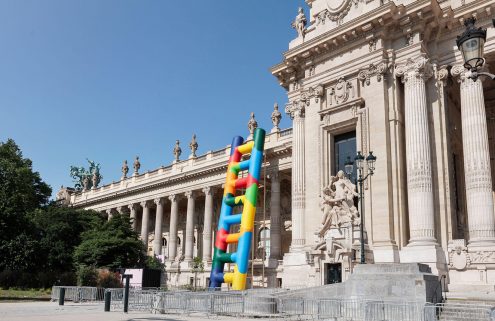Over 1,000 Druids and Pagans are expected to descend on Stonehenge in Wiltshire to observe the spring equinox on 21 March 2022. The ancient ritual goes back over 5,000 years and celebrates spring as the advent of rebirth, fertility and new beginnings.
For those that come to witness the event, the connection to our ancient culture – and ancestors, who monitored astronomical phenomena at the site – is still worth celebrating. As is the speculation about Stonehenge’s primordial meaning and significance.
Antiquarians and archaeologists in the 17th and 18th centuries believed the structure to be a Druid temple while historians in the 1960s proposed Stonehenge was an ancient ‘computer’ used by our ancient ancestors to predict lunar and solar eclipses. Socio-political theories have cast the ancient stone circle as a meeting point for a confederation of pre-Celtic chiefdoms. Post-millennium historians have argued Stonehenge memorialises the dead, the permanence of its colossal 25-ton stones representing the eternal afterlife.

It’s even posited that Stonehenge was the original prehistoric ‘wellness’ centre – a place of healing with magical 30-ft-tall bluestone columns, spotted with brilliant white stars of quartz; the Lourdes of primaeval Europe.
What is certain is that, while most of the theories have been dismissed over time, Stonehenge holds a significant place in our island’s history and remains a compelling space full of mystery and power.
Artist Jeremy Deller has frequently mediated on the ancient monument. He transformed Stonehenge – which can only be viewed at a distance — into a giant inflatable bouncy castle, where the audience can climb, jump and play. In 2018, he also published his book Wiltshire B4 Christ, exploring notions of mysticism, Pagan symbolism and British identity accompanied by photographs of Stonehenge and neolithic sites across the UK by David Sims.
Deller’s invitation to reappraise our national identity and history also offers a sarcastic comment on how these themes are often trivialised and exploited by nationalist and populist political agendas.
‘Sacrilege is playful and cheeky,’ says Deller. ‘The title is a way is to ward off any criticism — some will think that it is just that, a sacrilege, so why not call it that? One intended outcome is laughter, perhaps a few tears, and certainly enjoyment, though not necessarily in that order.’
Stonehenge and its psychic charge is also the subject of Weird Walk’s latest zine, ‘Magic Circle’. In a disenchanted world, the platform has found a receptive audience for its exploration of identity, connection to nature, and love of old stones, folklore, sacred sites and ancient customs inherent to these weird isles.

‘Magic Circle’ features psychedelia-tinged images taken at the 2021 winter solstice which capture the sense of enchantment and optimism inherent to Stonehenge – a phenomenon that still holds value in our modern world.
‘Sacrilege 2012’ by Jeremy Deller return to Oakley Court this Easter while ‘Magic Circle’ is available online now.


























